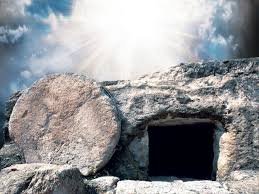Philippians 2:6-8 is a major passage not just in Paul’s letters but in all of Scripture. There the apostle is talking about the incarnation of God’s Son. Every phrase, every assertion, is momentous–and fraught with interpretive difficulty. If we get the person of Christ wrong, we’re heretics. So as the Bible reader approaches Philippians 2:6-8, there are misunderstandings to avoid. Let’s get the verses in front of us, and then we will note four possible misunderstandings of Paul’s words.
“who, though he was in the form of God, did not count equality with God a thing to be grasped, but made himself nothing, taking the form of a servant, being born in the likeness of men. And being found in human form, he humbled himself by becoming obedient to the point of death, even death on a cross” (Phil. 2:6-8)
Misunderstanding #1: Being in the “form of God” means the appearance of something that isn’t actually the case. Why could this misunderstanding happen? Because sometimes in English we use the word “form” to mean something that is exclusively external. A rope might be coiled in the form of a snake without actually being a snake. Christmas lights in a front yard might be in the form of a deer without actually being a deer.
The Correction: Paul is using the word “form” to denote the state of the Son’s existence and its accompanying characteristics. He is asserting the Son’s divinity. It is appropriate to say that the Son is God, and Paul’s words should not be understood as a denial of that fact. Soon Paul will make a statement about Christ’s remarkable humility, and that lowly status is a stark contrast to the divine status that Paul identified in 2:6. Jesus’ own words refer to his preincarnate state: “And now, Father, glorify me in your own presence with the glory that I had with you before the world existed” (John 17:5).
Misunderstanding #2: The notion of grasping at equality with God implies that Christ lacked equality with God. This conclusion would, like the first misunderstanding, deny the Son’s deity. Why could this misunderstanding happen? Because a person might “grasp” at something they don’t already possess. If Christ did not consider equality with God a thing to be grasped, perhaps that’s because he didn’t possess equality with God to begin with.
The Correction: Grasping a thing can be done by someone who already possesses that thing. In context, the language is about holding firmly to something, pulling it close selfishly. The action is the opposite of 2:4 where Paul called his readers to look to the interests of others. Paul is teaching that Christ did not view his status as something solely for his own advantage, something to exploit at the expense of others. Instead, while in the form of God and having equality with God, the Son acted on behalf of sinful creatures and considered their helpless estate. He did not grasp at his high position as a reason to say, “I will not attend to others. I will not consider their interests.” The incarnation happened not because Christ had a tight first but because he had an open heart.
Misunderstanding #3: Jesus emptied himself of his divine attributes. Paul teaches in 2:7 that Jesus made himself nothing or emptied himself. But how did he become nothing? What was emptied? The text doesn’t identify what Christ emptied, but some Bible readers have suspected that Christ emptied divine attributes like omniscience, omnipotence, and omnipresence.
The Correction: The subsequent language about “taking the form of a servant, being born in the likeness of men” explains what it means for the Son to make himself nothing. He emptied himself by adopting the low position of a slave. He made himself nothing by humbling himself at the incarnation. When Paul says that Christ “made himself nothing,” Paul is not making an ontological claim about Christ’s divine nature. The divine nature does not consist of parts that could be subtracted or switches that could be turned off. If the Son emptied himself of divine attributes, he would no longer be divine. And a merely human person cannot accomplish full and forever atonement for us. Jesus emptied himself in the sense that he became like a servant, born to share our humanity. The Son, for whom and through whom and by whom all things were made, is born in flesh from the womb of Mary–a humble estate indeed! But Paul is most certainly not teaching that Jesus exchanged deity for humanity. Rather, the Son added to himself a human nature. One person, two natures, truly divine and truly human.
Misunderstanding #4: Jesus only possessed a human likeness but not true humanity. The reason a reader might think this is because the text says that Jesus was “born in the likeness of men.” Could “likeness” mean the mere appearance of humanity without the true status beneath? Was the Son a spirit-being who lacked real flesh and blood on earth?
The Correction: Paul is using the word “likeness” in the way we read it in Genesis 5:3, where Adam had a son in his own likeness. Adam was a person, and so was his son. Jesus shared our likeness in the sense that he shared our humanity. Paul begins 2:8 by saying that Jesus was “found in human form,” and this confirms that “likeness” in 2:7 was not a superficial kind. Jesus possessed true humanity in a real human nature, and this humanity did not negate, contradict, or compromise his deity. The word “born” also confirms his true humanity, since mothers give birth to embodied image bearers. In 2:8 Paul mentions Jesus’ “death on a cross,” and only real bodies can die. So the word “likeness” in 2:7 is not about a semblance void of fact. The eternal Son of God became flesh, taking to himself true humanity.
We need to avoid the preceding misunderstandings when we read Philippians 2:6-8. These verses teach the Son’s preexistence, his true deity, and his true humanity. The Son did not–and could not–undivine himself. God cannot cease being who he is in his divine nature. Through the miraculous incarnation, the divine Son of God is also God with us, made flesh in a human nature for our salvation.



 Today is April 18, 2019, which is twenty years since my first sermon on April 18, 1999. I have a deep love for opening God’s Word with God’s people, and I hope this joy never fades. Throughout these twenty years, I have learned and heard many important truths about preaching Scripture, and it seems fitting to share twenty thoughts.
Today is April 18, 2019, which is twenty years since my first sermon on April 18, 1999. I have a deep love for opening God’s Word with God’s people, and I hope this joy never fades. Throughout these twenty years, I have learned and heard many important truths about preaching Scripture, and it seems fitting to share twenty thoughts.